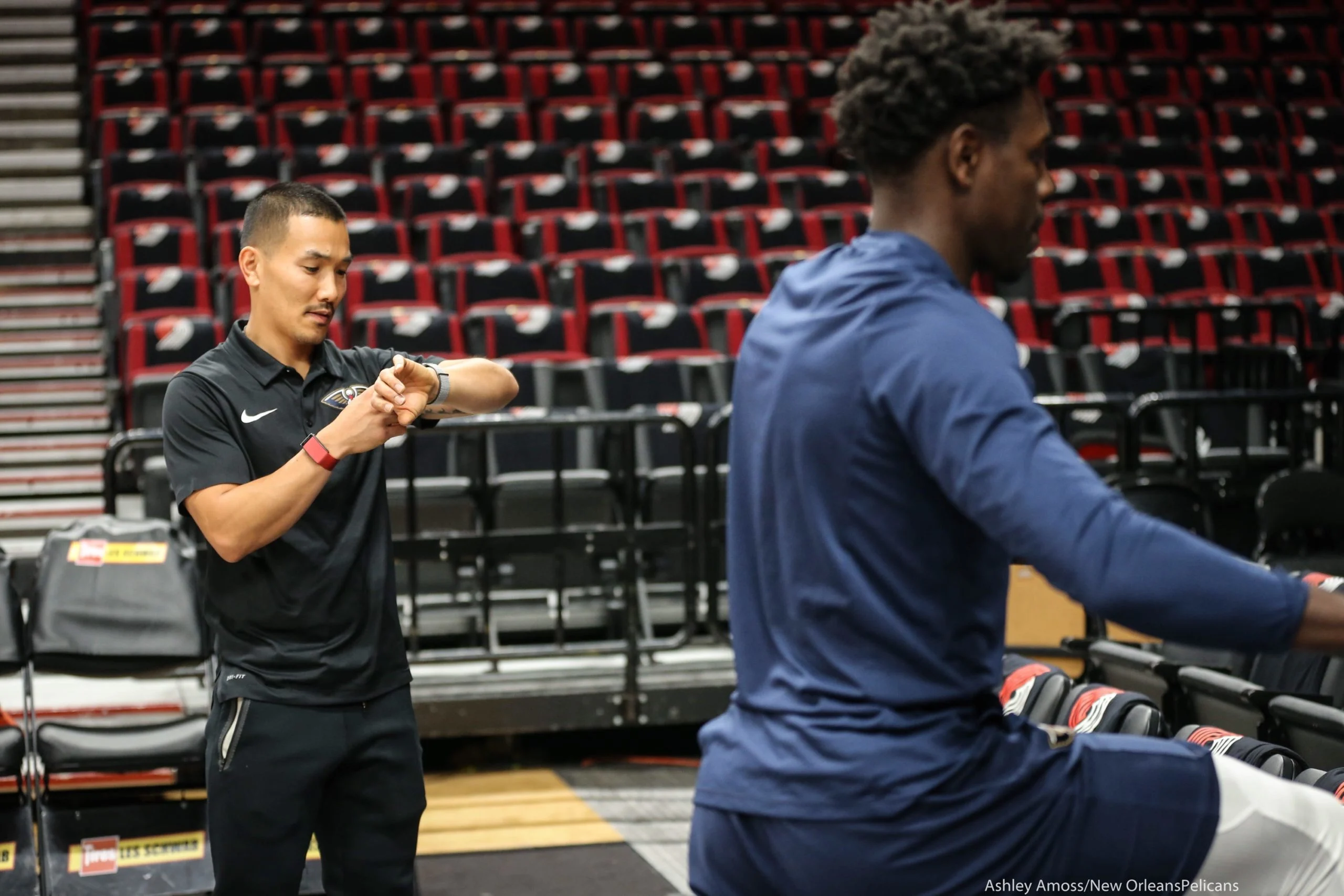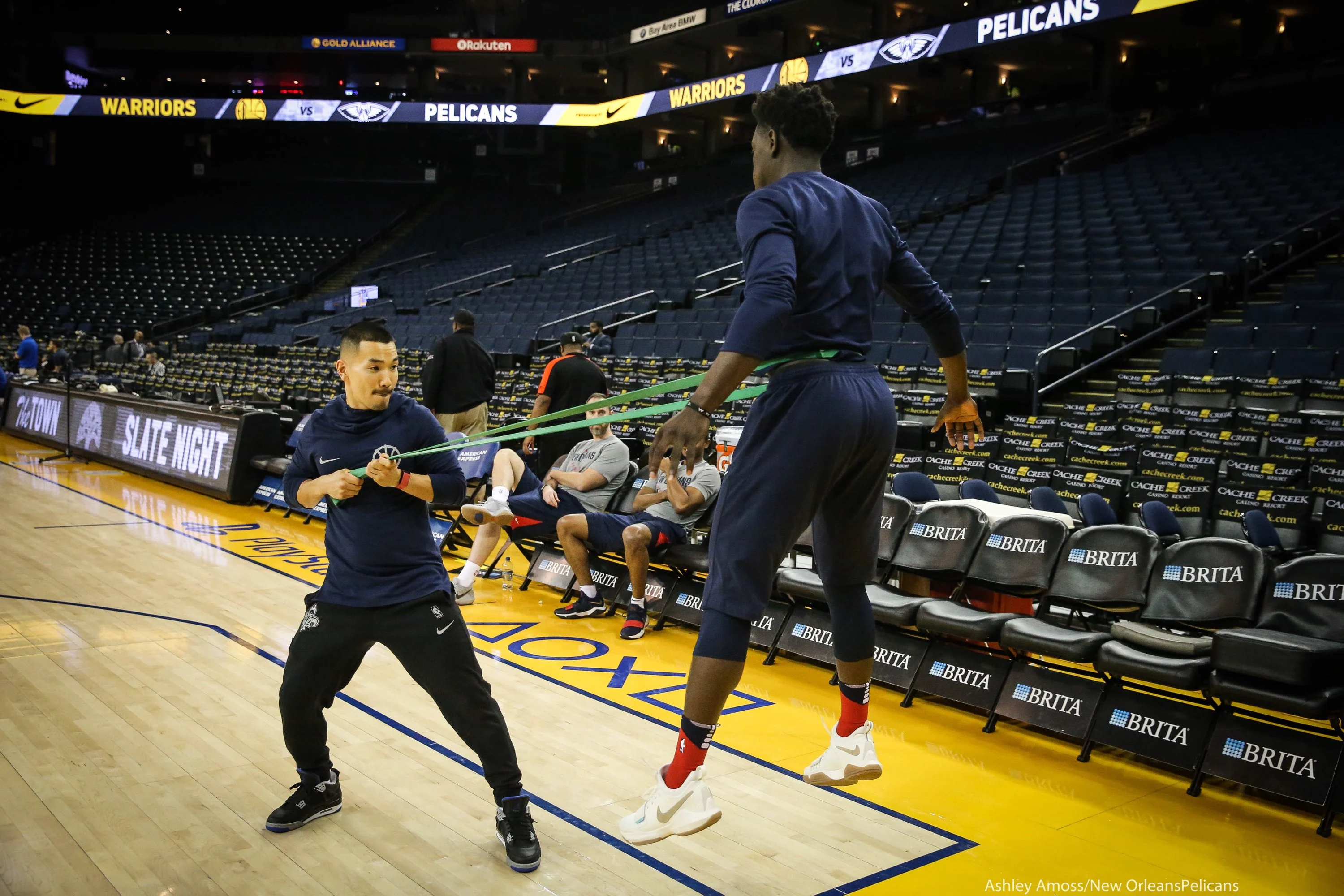Topics
- Article
- Basketball
- Member Stories
How WHOOP Helps Me Build Trust with NBA Players

I first started using WHOOP almost two years ago. As a Performance Coach for professional and other elite athletes, I like to stay on top of all the latest technology. I’ve tried just about every wearable device out there, but WHOOP is the one that to this day never leaves my wrist. For more on my background and how I got hooked on WHOOP in the first place, check out this story on The Locker from February of 2017, Behind the Scenes with an NBA Performance Coach.
Before I start working with an athlete, I want to make sure they have the right tools in order for us to accomplish what we’re trying to do. WHOOP has become one of those essential tools, thanks to its ability to provide actionable objective data on the athlete. Having this data enables us to know if the strategies we put in place for things like improved nutrition, sleep and injury recovery are actually working.
Tennis player Nicole Gibbs is a perfect example. Nicole wasn’t sleeping well, so we began implementing a variety of techniques, ranging from blackout curtains to chamomile tea before bed. By viewing her WHOOP data, we could see which methods had positive impacts on her sleep. Eventually her disturbances decreased, as did her time awake in bed, and she started sleeping much more efficiently.
A post shared by Nicole Gibbs (@gibbsyyyy) on Mar 25, 2018 at 5:17pm PDT
The key thing with pro athletes is that they have to realize you’re trying to collaborate with them. You can’t just tell them what to do and expect them to do it. It’s easy to say “You need more of this,” or “You need less of this to be better,” but it’s hard to get them to really buy in. By quantifying daily strain, nightly sleep and next-day recovery, WHOOP shows them how everything they do affects their bodies 24/7.
It’s much easier to create a sense of trust with an athlete when they can see the results of the work we’re doing right there in front of them (literally, on their phone). That trust is crucial for me. Building relationships is one of the most important parts of my job and a huge reason for why I am where I am today.
A few years ago, I took a long term deal with an NBA player to oversee his performance development. I’ve been working with him one-on-one for some time now, it’s been an enormous opportunity for my career. On the strength of that relationship, this season I was given the chance to consult for his entire team.
I gave up my gym in Sherman Oaks, CA and moved across the country to New Orleans, LA. That was a really tough decision for me, but it was a necessary part of the process of continuing to get better at what I’m doing. Now I’m in the NBA, rubbing elbows with all the coaches and trainers on a daily basis. It’s an unbelievable experience that’s giving me so much to grow on.
*** Performance Team 2017, New Orleans @pelicansnba *** s/o @aamoss1 for the ? !!
A post shared by COACH MIKE G. (@mrdoitmoving) on Oct 29, 2017 at 6:22am PDT
When I started working full time with NBA players, one of the biggest surprises I discovered was how many of them come into the league without understanding the value of performance enhancement–weightlifting, speed and agility training, cardio, energy systems development, basically everything I do for a living.
It’s not anyone’s fault, it’s just part of the training culture that gets them there. They’re on the court year-round at an early age, playing as much as possible. Many of them don’t have any weightlifting programs in high school, and then they go to college and they’re one and done, because that’s just what happens these days. When is what I do ever talked about in that scenario?
At the NBA level, it can be difficult to get across to them because they think “I made it here without doing any of this stuff, why should I start now?” It really takes a special kind of communicator to enable these guys to see the benefits. And as I said before, WHOOP can be very useful in that regard.
Because of the success I’d had with my guy, he got the whole team up and running on WHOOP. It was really exciting to see the players’ reactions when the entire squad was exposed to this powerful data.

Sleep is such a huge indicator of performance, and several of them learned right off the bat that they needed to improve the quantity and quality of their sleep. Beyond the obvious, like going out late or drinking alcohol, WHOOP helped bring to focus habits that negatively impact their sleep. For example, many pro athletes aren’t aware that the blue light that seeps through their TVs, phones and laptops triggers the hormone that keeps them awake, or that watching a scary movie or show that gets them going physiologically can create an environment internally that’s not restful.
Making these “Aha!” moments is critical. It may not change their behavior completely, but at least it’s on their minds now, at least they’re thinking twice about what they do at night. That’s how valuable the WHOOP can be.
The Strain and Recovery metrics have been eye-opening for the team as well, giving the guys an opportunity to better comprehend the various stressors they subject their bodies to. WHOOP allows them to see how things like eating fries or sugary foods impact their Recovery, or how a hard workout in the gym might create as much Strain as playing a game. It lets them know when a recovery session might be what their bodies need, or some light skill training as opposed to beating themselves up in practice.
I’m not a great sleeper myself, and wearing WHOOP helps me ask the right questions and search for answers–how to improve my heart rate variability, lower my resting heart rate, etc. Then I can use these answers to help out others, which is what I’m all about. WHOOP is making me better all around, both in terms of my own physiologically, and as a performance coach.
Photo Credit: Ashley Amoss/New Orleans Pelicans